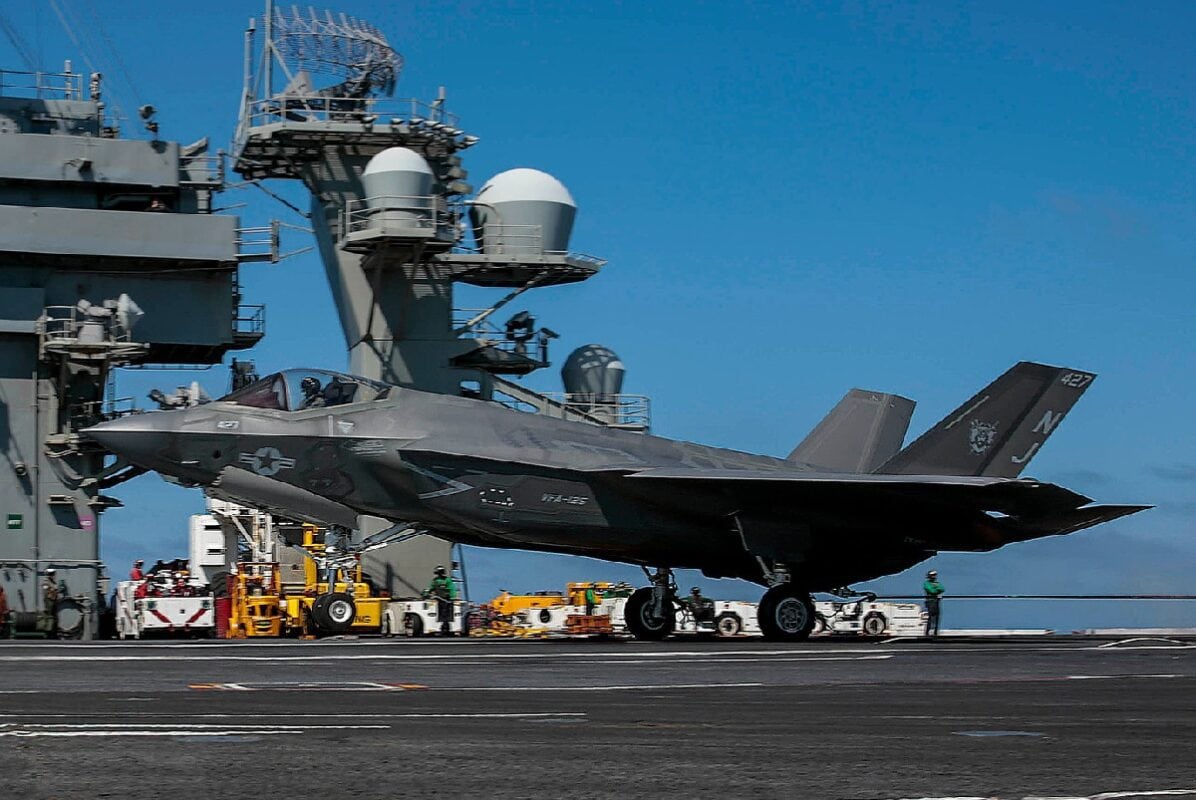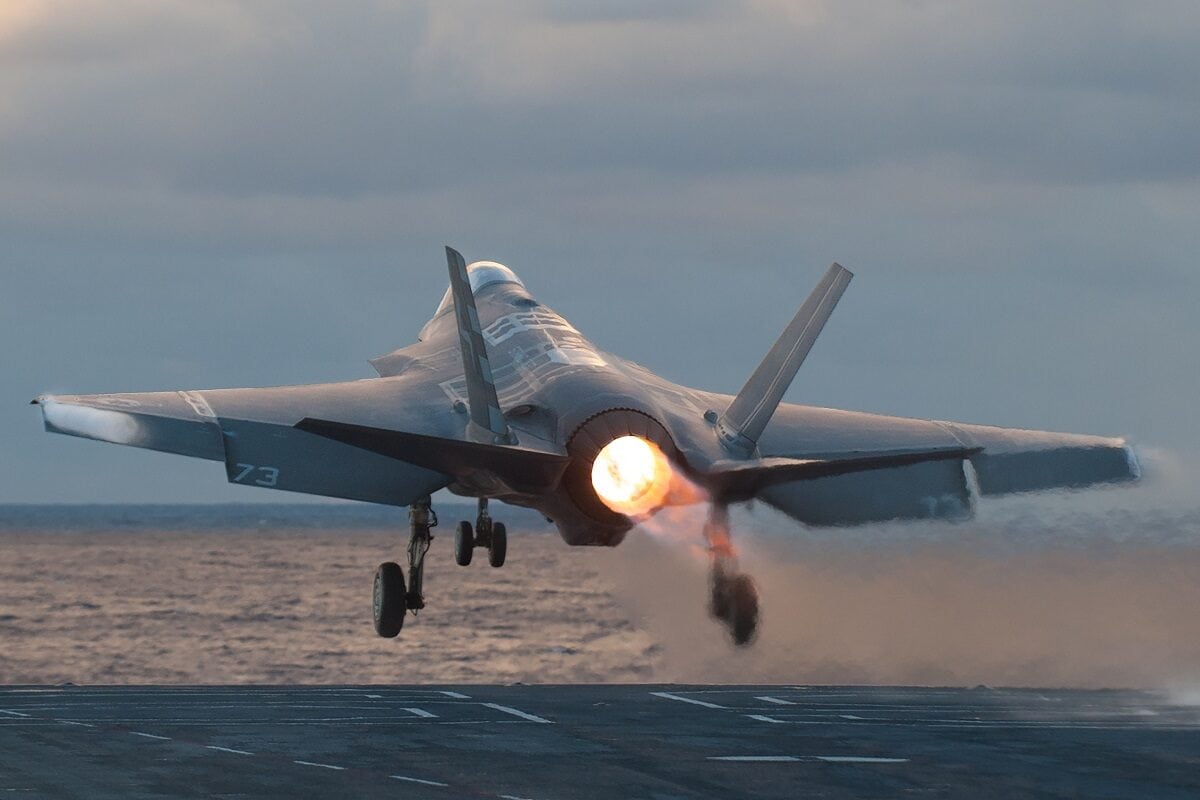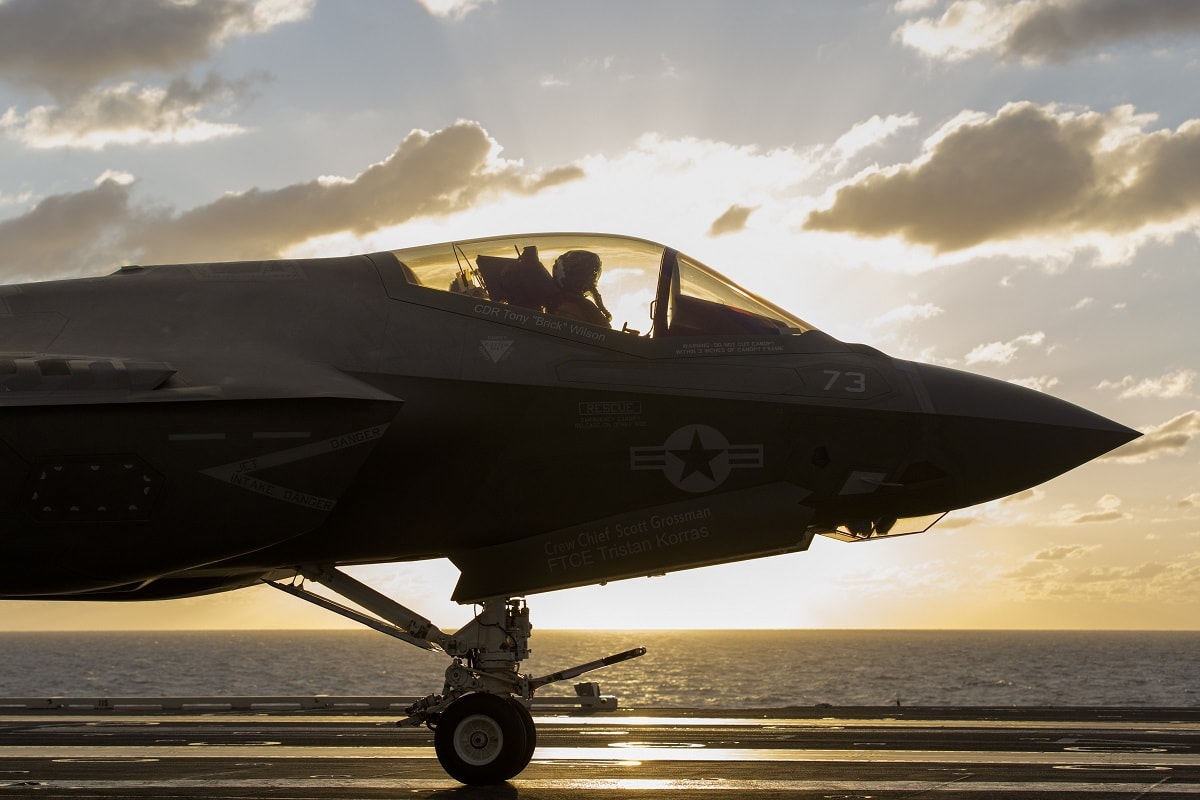On Monday the Carl Vinson Carrier Strike Group (CVCSG), led by Carrier Strike Group (CSG) 1, departed San Diego in support of global maritime security operations. This was no ordinary deployment of CVCSG as this marks the first time that the USS Carl Vinson (CVN-70) was embarked with the Lockheed Martin F-35C Lightning II and CMV-22B Osprey aircraft.
The carrier is now in service with the Navy’s first F-35C squadron, the “Argonauts” of Strike Fighter Squadron (VFA) 147. This marks the first deployment of the carrier-based variant of the fifth-generation Joint Strike Fighter. In addition, CVN-70’s Carrier Air Wing 2 has become the Navy’s first integrated air wing to include both fourth-generation F/A-18 Super Hornets and the advanced F-35Cs in an overseas deployment.
“Vinson is the first carrier to accommodate a mix of 4th and 5th generation strike fighters, providing unprecedented lethality and survivability and ensuring the Navy team can operate and win in contested battlespace now and well into the future,” said Capt. Tommy Locke, commander, Carrier Air Wing (CVW) 2 via a statement from the Navy’s Pacific Fleet.
“Integrating the new aircraft has truly been a team effort and using these new tools and technology—new sets of multispectral sensors and the information they provide—will increase lethality and survivability of the air wing and strike group,” added Locke. “We plan on leveraging recently established tactics, techniques and procedures and developing innovative ways to use the new technologies to enhance our combined warfighting efforts.”
In addition to VFA-147, CVW-2 consists of three F/A-18E/F Super Hornet squadrons, the “Bounty Hunters” of VFA-2, the “Stingers” of VFA-113, and the “Golden Dragons” of VFA-192; the “Gauntlets” of Electronic Attack Squadron (VAQ) 136, operating the EA-18G Growler; the “Black Eagles” of Airborne Command and Control Squadron (VAW) 113, operating the E-2D Advanced Hawkeye; the “Titans” of Fleet Logistics Multi-Mission Squadron (VRM) 30, operating the CMV-22B Osprey; the “Black Knights” of Helicopter Sea Combat Squadron (HSC) 4, operating the MH-60S Seahawk; and the “Blue Hawks” of Helicopter Maritime Strike Squadron (HSM) 78, operating the MH-60R Seahawk.
First Operation
While CVCSG won’t be heading into combat, its capabilities will be put to the test as it is beginning its deployment by taking part in Large Scale Exercise 2021 (LSE 2021), a live, virtual and constructive, globally integrated training operation that spans multiple fleets. LSE 2021 was designed to refine synchronized maritime operations based on a progression of scenarios that will assess modern warfare concepts in support of the joint force.
The exercise will be executed by the U.S. Info-Pacific Command, which incorporates U.S. Army, Air Force, Navy, and Marine Corps forces, alongside UK Armed Forces, Australian Defence Force, and Japan Self-Defense Force.
The all-domain exercise will take place across the Indo-Pacific region with U.S. global partners in the form of field training, logistical support activities, amphibious landings, airborne and ground maneuvers, air operations, maritime operations, and special operations activities.
Ready for Action
According to the U.S. Navy, prior to its deployment, the strike group successfully completed multiple interoperability operations in the Hawaiian Islands Operating area. That included integrated flight operations between CVW-2’s carrier-based aircraft and land-based Marine Corps, Air Force, and Coast Guard aircraft, as well as operations with Coast Guard cutters. Additionally, the strike group completed deployment workups, which tested every core warfare area within the group’s mission sets through a variety of simulated and live events, and ensured that the carrier strike group was fully capable across the full spectrum of military operations.
“Our crews and staffs have demonstrated tactical and technical expertise through teamwork; there is no doubt in my mind that the men and women of the Carl Vinson Carrier Strike Group are ready to fight and win decisively from the sea as we deploy in support of sustained presence and power projection,” said Rear Adm. Dan Martin, the commander of CSG 1.
“One of the hallmarks of aircraft carrier strike groups is their agility—specifically their ability to quickly and effectively respond to the entire spectrum of military operations,” added Martin. “From combat missions to humanitarian assistance/disaster relief missions, we can do it all. We sail forward as a visible and powerful symbol of our nation’s resolve to maintain America’s advantage at sea.”

200511-N-MM912-1117rrPACIFIC OCEAN (May 11, 2020) An F-35C Lightning II attached to the “Rough Raiders” of Strike Fighter Squadron (VFA) 125 makes an arrested landing on the flight deck of the aircraft carrier USS Abraham Lincoln (CVN 72). Abraham Lincoln is underway conducting routine operations in the U.S. 3rd Fleet area of operations. (U.S. Navy photo by Mass Communication Specialist 3rd Class Michael Singley/Released)

CF-3 FLT 255 USS Dwight D. Eisenhower on 06 OCT 2015. CBR Ted Dyckman was flying CF-3 Lockheed Martin Aeronautics Company, Lockheed Martin Photography by Andrew McMurtrie
Last year, USS Carl Vinson had completed its 17-month maintenance and retrofit, during which the Nimitz-class carrier underwent a complete restoration and system retrofit to accommodate the F-35C’s mission capabilities. The Navy variant of the Joint Strike Fighter was designed to operate aboard U.S. Navy carriers – and it can carry more fuel and is built for catapult launches and features fly-in arrestments.
Peter Suciu is a Michigan-based writer who has contributed to more than four dozen magazines, newspapers and websites. He regularly writes about military small arms, and is the author of several books on military headgear including A Gallery of Military Headdress, which is available on Amazon.com.

